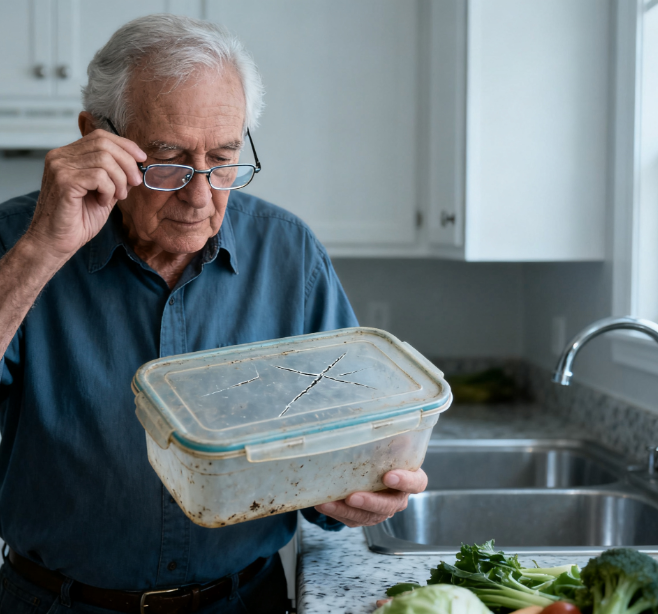
This Common Kitchen Item Is Releasing Toxins… See More
You reach for it multiple times daily—perhaps to pack leftovers, cover a bowl of rising dough, or protect a plate of cookies. It’s transparent, convenient, and feels utterly harmless. But what if this everyday kitchen essential is secretly introducing toxins into your home? What if the very product designed to preserve your food is actually contaminating it?
For many households, plastic wrap feels like a indispensable kitchen helper. Its ability to create an airtight seal seems perfect for keeping food fresh. However, mounting scientific evidence suggests that many plastic wraps—particularly those made with polyvinyl chloride (PVC) or containing plasticizers like phthalates—can leach harmful chemicals into your food, especially when used incorrectly.
The problem begins with the very nature of plastic wrap. To make PVC flexible and clingy, manufacturers add plasticizers—chemicals that literally make the plastic soft and pliable. These plasticizers don’t form permanent bonds with the plastic, meaning they can migrate into food, particularly when exposed to heat, fats, or acids. What makes this especially concerning is that we often use plastic wrap with foods that perfectly facilitate this chemical transfer: fatty meats, cheese, oily leftovers, and acidic tomato-based dishes.
The microwave presents the greatest danger. When you cover food with plastic wrap and heat it, the combination of heat and steam accelerates chemical leaching. Those tiny droplets of condensation that form on the underside of the wrap? They’re not just water—they may contain chemicals that then drip directly onto your food. Even using plastic wrap in the refrigerator isn’t completely safe, as chemicals can still migrate over time, especially with high-fat foods.
The health implications are particularly concerning for older adults. Phthalates—common plasticizers found in many plastic wraps—are endocrine disruptors that can interfere with hormone function. For postmenopausal women and older men already experiencing natural hormonal changes, additional endocrine disruptors may exacerbate health issues. These chemicals have been linked to various health concerns including metabolic disorders, reproductive issues, and even certain cancers.
What makes plastic wrap especially problematic is how we typically use it. How many times have you stretched it tightly across a hot bowl of soup or stew? The heat from the food creates a perfect environment for chemical transfer. Or perhaps you’ve used it to cover a plate of brownies still warm from the oven? The residual heat and the fat content create ideal conditions for leaching.
Even the way you store plastic wrap matters. Many people keep it near the stove or in a sunny spot for convenience, but heat and light can degrade the plastic, making it more likely to leach chemicals even before use.
The alternatives aren’t necessarily better if chosen without care. Many “microwave-safe” plastic wraps simply mean the wrap won’t melt in the microwave—not that it won’t leach chemicals. Even products labeled “BPA-free” may contain other concerning chemicals that manufacturers aren’t required to disclose.
The solution isn’t to panic but to become mindful. Start by reading labels carefully. Look for plastic wraps specifically labeled as phthalate-free and made from safer materials like polyethylene. Better yet, consider switching to reusable alternatives like glass containers with silicone lids, beeswax wraps, or even simple plates inverted over bowls.
When you must use plastic wrap, avoid letting it directly touch food—especially hot, fatty, or acidic foods. Use it only for cold items and remove it before microwaving. Never use plastic wrap in conventional ovens, and be cautious even with microwave use.
Your kitchen should be a place of nourishment, not hidden chemical exposure. By making simple changes to how you store and cover food, you can significantly reduce your exposure to potentially harmful chemicals while still keeping your food fresh and protected. After all, the goal isn’t to eliminate convenience but to make choices that protect your health while maintaining it.